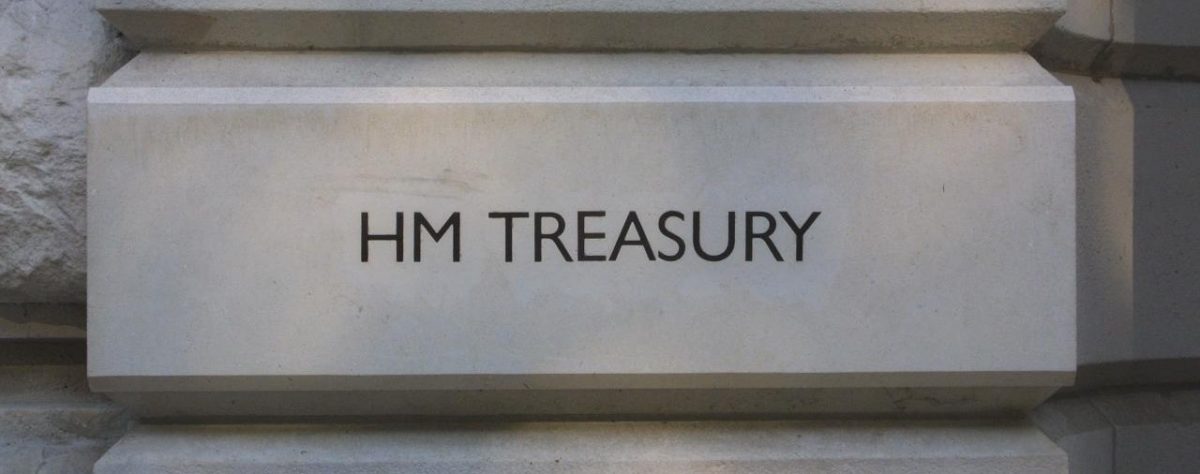
The Macro and the Micro – What It Means For You
The macro picture
The Office for Budget Responsibility has revised up government borrowing forecasts for 2014 and 2015 – but figures for the following years are lower than previously estimated, according to Chancellor George Osborne.
Giving his Autumn Statement, Osborne said public sector net borrowing is now forecast to stand at £91.3bn this year, down from £97.5bn last year and above the £86.7bn forecast in March’s Budget.
Estimates for 2015 borrowing have also been revised up, from £69bn to £75.9bn, but figures for 2016 and beyond are lower than expected.
Borrowing will fall to £40.9bn by 2016, £14.5bn by 2017 and then rise to a surplus of £4bn in 2018-19, Osborne said, citing OBR forecasts.
“We end in a marginally stronger position than expected in the Budget. By 2019-20 Britain is now expected to have a surplus of £23bn,” said the Chancellor.
Meanwhile the 2014 growth rate was revised up from an estimated 2.7% in March to a current forecast of 3%, as expected.
Growth forecasts for future years, however, were lower than expected, and 2016-18 annual figures were revised down.
“The warning lights are flashing over the global economy,” Osborne said, pinning the blame on the OBR revising down global growth forecasts.
In the UK, the OBR now expects growth to come in at 2.4% next year, up from a March prediction of 2.3%. But the GDP forecast was revised down from a 2.6% forecast to 2.2% for 2016, down from 2.6% to 2.4% in 2017, and down from 2.5% to 2.3% in 2018.
The micro – what changes will affect you?
There were no surprises in George Osborne’s Autumn Statement to match the seismic pension changes in his last Budget. However, he did pull one rabbit out of the hat for savers in the shape of new inheritability of ISAs for married couples. He also confirmed how pension wealth can be cascaded down the generations.
ISA inheritability
ISA savers will benefit from two positive changes:
- The annual allowance will increase to £15,240 from £15,000 from April 2015. There was NO mention of a lifetime cap for savers.
- From 3 December, spouses and civil partners will be able to inherit their deceased partner’s ISA fund and retain the tax advantages of the wrapper. There will be no impact on the spouse’s/civil partner’s own ISA annual allowance.
ISA accounts left to a spouse or civil partner will of course continue to pass IHT free as before – the transfer itself being covered by the spousal exemption. The big difference is that the continuing returns on a deceased partner’s savings will be tax free.
The combined value of a surviving partner’s ISA account will ultimately be included in their own estate for IHT. Those near to or already over age 55 may want to consider moving these savings into a pension, potentially allowing the pension fund to be passed on to their children and grandchildren tax free.
Pension freedoms confirmed
Yesterday’s confirmation of the new DC pension death benefit regime puts the final icing on the cake for next April’s world of ‘freedom & choice’.
- On death before 75, any death benefit will be paid tax free within the Lifetime Allowance (LTA). In a change from the original proposals, this will now apply to survivors’ annuities and pension guarantee payments as well as inherited drawdown pots.
- On death at 75+, death benefits will be taxed as the recipient’s income, when they draw the funds. For 2015/16 only, non-drawdown lump sums will be taxed at a flat rate of 45% – but income tax will apply to all post-75 death benefits from 2016/17 onwards.
- The old tax distinction between crystallised and uncrystallised pots is gone. Within the LTA, the sole determinant of tax treatment will be the deceased’s age at death.
- Any individual beneficiary of a flexible pension can choose to keep their inherited pension pot in the drawdown wrapper and decide when (or if) they draw down on it.
These changes transform the wealth transfer planning equation. This places flexible pensions at the heart of inheritance planning going forward, opening up exciting new planning opportunities.
On the flip side, as widely expected, those accessing the new freedoms will pay the price of a reduced £10k ‘money purchase’ Annual Allowance and no future carry forward.
- This sends a clear message to maximise pension funding before accessing the new flexibility.
- And the exemptions for existing capped drawdown users, and those only drawing tax-free cash after April, ensures that good advice is needed to navigate this tax minefield to keep options open.
Other pension news
- State pensions: The new single-tier State pension from April 2016 will be at least £151.25 (subject to a minimum NI contribution record of 35 years), with the final figure being confirmed next Autumn. Meantime, the Basic State pension will be increased by 2.5% (to £115.95 for a single person) from April 2015 under the ‘triple-lock’ guarantee.
- Age 75: Following informal consultation, there will be no change to the 75 upper age limit for tax relief on pension contributions by individuals.
- Means-testing: Fears that the new pension flexibility could lead to a lifetime’s pension savings being deemed immediately available in means-testing assessments have been quashed. Assessments will be based on the annuity income the pot could provide, with higher income only being assessed if it’s actually taken from the pot.
U-turn on IHT settlement nil rate bands
The Government has confirmed that it has scrapped plans to introduce the IHT settlement nil rate band and replace it with new rules to be announced in next week’s Finance Bill. The replacement rules will still seek to prevent tax avoidance through the use of multiple trusts.
The settlement nil rate band rules would have seen each settlor have just one nil rate band which they could allocate across all relevant property trusts that they’ve created. Trusts created before 7 June 2014 would have remained subject to the old relevant property rules, leaving two sets of complex rules operating in parallel.
The result could have saddled clients with trusts where the purpose is to accept the payment of death benefits, such as from life assurance contracts and pensions, with the burden of tax compliance and reporting, even where no inheritance tax is due.
We await the detail in the Finance Bill and hope that it delivers on the promise of simplifying the taxation of trusts and IHT.
Income tax
Minor changes were made to allowances and thresholds for the new tax year:
- The personal allowance will rise to £10,600 in 2015/16 for those born after 5 April 1938. This is an additional £100 on what had been previously announced. At the same time, the level at which income tax becomes payable at higher rates will rise in line with inflation to £42,385 (from £41,865), meaning that higher rate taxpayers with incomes below £100,000 will also be better off by £224 – a little less pressure on the ‘squeezed middles’.
- Age related allowances will remain at £10,660 for those born before 6 April 1938.
- From the 2015/16 tax year, a spouse or civil partner who doesn’t have income to fully use up their personal allowance will be able to transfer up to £1,060 to their partner, provided that the partner is a basic rate taxpayer.
In his Autumn Statement speech on 3 December, George Osborne said the increase in personal allowance will save working people £825 a year and “will take three and a half million of the lowest paid workers out of paying tax altogether”.
The higher rate income tax of 40% covers from £31,866 to £150,000, minus the tax free allowance, meaning most people start paying higher rate tax on income over £41,865. About 4.6 million people pay the higher rate tax and 1 million more will by 2020 even if the threshold rises.
The top rate of tax, at 45%, impacts earnings over £150,000.
More charges, less choice for the non-domiciled
The charge to use the non-domicile basis of taxation is increasing.
Non-domiciles who choose to use the remittance basis and have been resident for at least 7 of the past 9 years, currently pay a charge of £30,000.
This will increase to £60,000 (from £50,000 in 2014/15) once they’ve been resident for 12 out of 14 years.
And a new charge of £90,000 will be brought in for those who’ve been resident 17 of the last 20 years in the UK.
The Government will also consult on making the choice to pay the remittance basis charge stick for a minimum of 3 years, so that non-domiciles are not easily able to chop and change the basis on which they’re taxed.
Non-domiciles’ taxation remains in the spotlight and this is unlikely to change. As offshore bonds are not taxed until a chargeable gain arises, they may offer another way for non-domiciled individuals to control when and how they pay their tax.
Impact on EIS
1. Five months left to invest in renewable energy through EIS, as government completes phasing-out process.
Over the past few years, the government has progressively restricted the extent to which EIS tax reliefs can be combined with renewable energy tariffs and subsidies. In the Autumn Statement, the Chancellor announced that after April 6th 2015 only certain community-based renewable energy projects will still be able to qualify for EIS reliefs.
The change will not be retrospective, so existing investors in EIS renewable energy companies will not be affected. For new investors, and existing investors considering further subscriptions, certain EIS companies will be investing in Anaerobic Digestion plants and Grid Support technology between now and the end of the tax year.
2. Increased incentives for successful entrepreneurs to make EIS investments.
To encourage successful entrepreneurs to participate in the EIS, the government will allow Entrepreneurs’ Relief to be deferred along with the gain it relates to, when an EIS-qualifying investment is made. In other words, 10% Entrepreneurs’ Relief can be claimed at the point that the gain recrystallises on exit from the EIS.
3. Encouraging wider participation in EIS investments.
The Autumn Statement also announced the development of an online administration process for EIS investors and investee companies, scheduled for launch in 2016. This has the potential to make it much easier for individuals to claim their EIS reliefs.
Important Information
An investment should only be made on the basis of the formal Information Memorandum.
- These strategies invest in unquoted securities. Your capital is at risk and you should not invest if you are not willing to bear this risk. Unquoted investments can be difficult to sell and to obtain accurate information as to their worth.
- Tax advantages are summarised based on current legislation. Tax treatment depends on your individual circumstances and may be subject to change in future.
- Past performance is not a reliable indicator of future results.
Other tax advantaged structures
The Social Investment Tax Relief (SITR) scheme is being enlarged. The government will seek EU approval to increase the investment limit to £5 million per annum per organisation up to a maximum of £15 million per organisation. The changes will come into effect on or after 6 April 2015, subject to state aid clearance. There has been virtually no interest in bringing out retail products using SITR so far (although the reliefs are similar to EIS) because it was restricted to companies only raising a maximum of around £300,000. The new £5m limit is sure to result in providers looking anew at this area.
The government will consult in early 2015 on introducing a Social Venture Capital Trust (VCT) in a future finance bill.
Stamp Duty on residential property
The government is to scrap the existing ‘single slab’ approach to stamp duty on residential property purchases, introducing a new tiered charge from 4 December.
The current system means buyers pay 1% in stamp duty land tax on a £250,000 home, but 3% on a property costing £250,001. This represents an unfair system, Chancellor George Osborne said during the Autumn Statement.
Accordingly, as of midnight 3 December, the government introduced a tiered approach. There will be:
- No tax on the first £125k of purchase price;
- Then 2% on amount up to £250k;
- Then 5% up to £925k;
- Then 10% up to £1.5m;
- Then 12% on everything else
The Chancellor said stamp duty will be cut for “98%” of homebuyers who currently pay it as a result of the changes. Shadow Chancellor Ed Balls welcomed the move, but questioned why there will be no annual charge on the most valuable residential properties, as Labour proposes.
Previously the stamp duty rates were:
- Up to £125,000 – Zero
- Over £125,000 to £250,000 – 1%
- Over £250,000 to £500,000 – 3%
- Over £500,000 to £1m – 4%
- Over £1m to £2m – 5%
- Over £2m – 7%
Source: HMRC
Risk warnings
This document has been prepared based on our understanding of current UK law and HM Revenue and Customs practice, both of which may be the subject of change in the future. The opinions expressed herein are those of Cantab Asset Management Ltd and should not be construed as investment advice. Cantab Asset Management Ltd is authorised and regulated by the Financial Conduct Authority. As with all equity-based and bond-based investments, the value and the income therefrom can fall as well as rise and you may not get back all the money that you invested. The value of overseas securities will be influenced by the exchange rate used to convert these to sterling. Investments in stocks and shares should therefore be viewed as a medium to long-term investment. Past performance is not a guide to the future. It is important to note that in selecting ESG investments, a screening out process has taken place which eliminates many investments potentially providing good financial returns. By reducing the universe of possible investments, the investment performance of ESG portfolios might be less than that potentially produced by selecting from the larger unscreened universe.


